Extreme Makeover: 1935 Audi 225 Cabriolet
I recently had the chance to visit the Tampa Bay Automobile Museum in Pinellas Park, Florida, which is a delightful collection of historic vehicles that all share a common theme: they were engineering masterpieces in one form or another, bringing to market a significant feature or innovation that is likely considered commonplace today. The overseers of the museum represent a multi-generational approach to finding one-off vehicles and other rarities to preserve for long-term display, as this once-rough 1935 Audi 225 Cabriolet goes to show. The car has since been restored, and the transformation is magnificent. See it here on the Tampa Bay Automobile Museum website and be sure to visit the collection in person if you have the chance.
The Audi is significant for being the first European model to combine front-wheel drive with a six-cylinder engine. This innovative achievement is what drives all of the cars in the collection, with other novelties like the Ferguson four-wheel drive Ford Mustang taking residence in the collection, along with the likes of the Citroen SM, Panhard Dynamic, NSU RO80, Mazda Cosmos, and the best collection of Tatras you’ve ever seen, with a T97, T87, T77A, and 603 among them. As you can see, this Audi 225 was found in incredibly rough shape; in fact, it was discovered after a tip that it was rotting away in a rural Florida backyard. The team at the Tampa Bay Auto Museum purchased it, dragged it out, and then began painstakingly restoring it back to good health.
As you can see, the results speak for themselves. The team located the Audi outside of Lakeland, Florida where it sat rusting away for 50 years. A six-year resurrection process by the Museum’s highly skilled restoration team produced the end result, which clearly needed everything. Today, the Audi is impossible to miss, sitting near the front of the collection and looking resplendent in two-tone paint with a corresponding top. The interior shows no expense was spared in sourcing the correct materials for the carpeting, woodgrain dash fascia, ornate gauges, and other finish work like the polished switchgear and the freshly upholstered seating areas. Like every car in the collection, the Audi is registered for road use and exercised regularly.
The exterior features gorgeous wire wheels which were clearly missing when the Audi was discovered in Lakeland. However, to find such a significant car practically in your own backyard means you don’t sweat the (relatively) small things when taking on a restoration of this scale. The collection at the Tampa Bay Automobile Museum is a refreshing change of pace from many of the other museums I’ve been to which tend to place the emphasis solely on eye candy rather than the meaningful contributions to the evolution of the automobile. If you’re ever in the area, I highly recommend stopping in for a visit and exploring the myriad achievements that automakers large and small have contributed, and appreciate the significant efforts made by the Cerf family to preserve these vehicles for future generations.
Auctions Ending Soon
 2006 Ford Mustang Saleen S281 SCBid Now5 hours$16,000
2006 Ford Mustang Saleen S281 SCBid Now5 hours$16,000
 2002 Subaru Impreza WRXBid Now3 days$333
2002 Subaru Impreza WRXBid Now3 days$333
 1975 Chevrolet Corvette ConvertibleBid Now3 days$3,000
1975 Chevrolet Corvette ConvertibleBid Now3 days$3,000
 1964 Ford F-100 Camper CustomBid Now3 days$2,000
1964 Ford F-100 Camper CustomBid Now3 days$2,000
 2006 Jeep Wrangler SportBid Now5 days$10,500
2006 Jeep Wrangler SportBid Now5 days$10,500
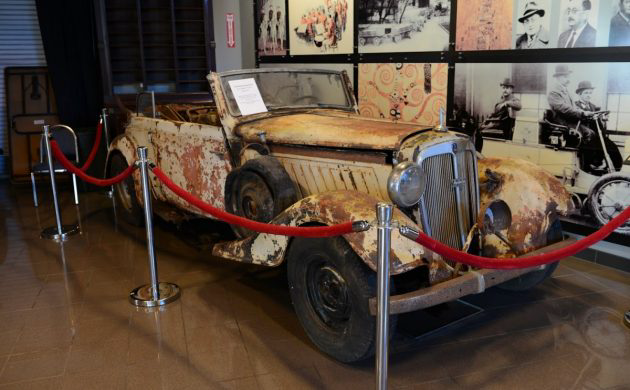

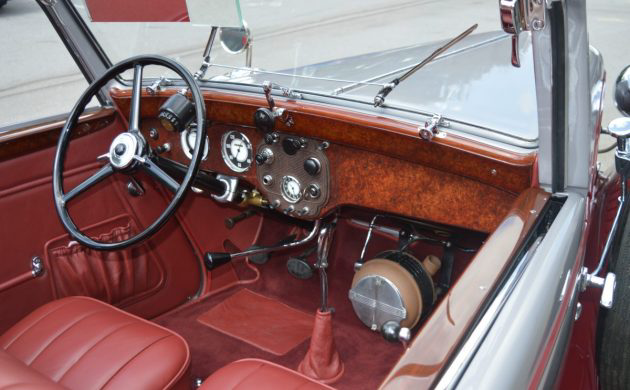
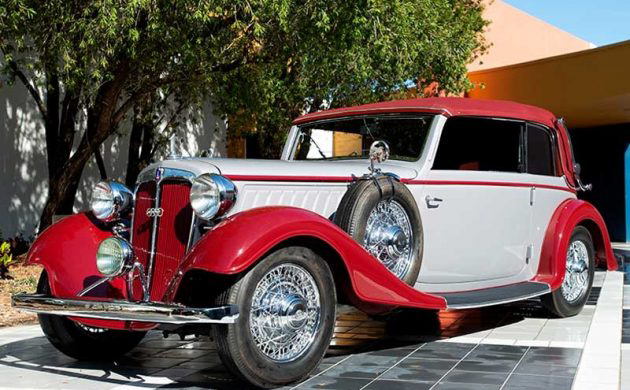


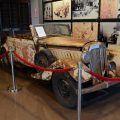
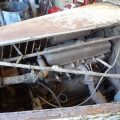
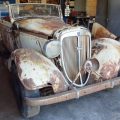


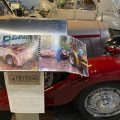

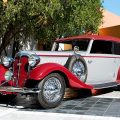
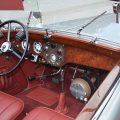

Comments
I have been to that museum and can vouch that it is a very unique auto museum. It has a lot of French cars along with some Audis, Czech cars and an assortment of other makes. As mentioned, all of the cars are currently registered and taken out for a drive on a regular basis. I found the museum to be very interesting. Some of the cars are very rare. You can only see them here.
…. and they do one major league restoration on their cars. Beautiful!.
I agree, a fine museum to visit.
In the year 1935 or ´36 mt father, a doctor in Bad Nauheim Germany, bought exactly this model – the only one in the entire region of Frankfurt a.M. His car was a light green with a golden pinstripe and dark green fenders. In the year 1943 he, being a doctor on the Russian front since ´41, donated the car and the steel fencing in front of our house to the war effort. This beautiful car ended up being driven by a party official who butchered it, by installing a wood burning system in the trunk. This was found in most vehicles because of the dearth of gasoline. When he returned from a POW camp in 1947 (which was miraculous because medical men invariably ended up in camps in Siberia), he attempted, to no avail, to recover his pride and joy. Whatever happened to it is anybody´s guess. This car was no doubt treated as war booty and brought to the USA, as it happened to the 1935 J.A.P. powered Bücker-350 motorcycle which , fully restored, now resides in the Packard museum. Hat off to the people who spent their talent, effort and money to restore such finds to their original beauty.
It may have been brought back by a GI stationed there in the late 40s or early 50s. Cars, the ones that survived the war, were dirt cheap then because the Germans couldn’t afford gas.
Well yes, it was ¨bought¨ back¨. So far so good, it was no doubt plundered. In those days, Germans were not allowed to own motorcars or motorcycles, even radios were confiscated. A GI paying anything for what he simply took is ludicrous. None of this has anything to do with tge price of gas. Germans were not allowed to buy gas, even if they hsd the wherewithall. All of this is called consequences of war. To beat around the bush is counterproductive. Let´s be glad the car was found by car lovers who restored it. Had it been left in Germany in 1945, it would in all probability have disappeared.
Gee, does anyone wonder why no one was allowed to own a car or buy gas ?
The powers to be were terrified of domestic tourism.
They believed everyone wanted to visit personally the Russian Front.
Such tourism brings great fear to the whiners and the wimps.
Notice I said above, “late 40s or early 50s”. True, the years 45, 46 and even 47 were chaos and, yes there was looting and theft by allied forces. But by the end of ’46 all the fighting forces had been sent home and those that remained were occupation forces. Things were returning to normal. I was surprised to find out that Mercedes resumed production in ’47 and VW started in ’49 so somebody had access to money and gasoline.
Since Germany was lacking in most raw materials especially by 1943 , it was likely scrapped for their war effort, or blown to pieces during a battle or air raid . Depending on its condition, it also could have ended up in the massive scrapyards where military items ended up. While some surviving vehicles ended up in this country , it would have been high ranking officers that could pull strings to get it done. Most GIs just wanted to get home, and any souvenir would have been something he could carry back. It would have been easier for the European Allies to ship vehicles home. .
Wait! There’s a car museum in Pinellas Park? What? I’ve had a beach shack on Indian Rocks beach since the turn of the century and never known this! That’s terribly embarassing.
I greatly appreciate all the work that went into restoring such a vehicle, Nazi wagens of this vintage always call to mind images of mass murdering German scum riding along in parades and Seig Heil-ing themselves silly. I know old Adolf preferred Mercedes, but which scumbag adored Audis? Was it Himmler? Or Ribbentropp?
That commentary isn´t even worthy of YOU. Good Lord, what blind, insane hatred.
Perhaps, Gerard Frederick, FireAxeGXP had a relative burned in the German ovens. Or tortured by “Drs” at the concentration camps. “Judge not, lest ye be judged.”
I realize that I am surrounded by people who are thoroughly indoctrinated and delight in Spielbergian rethoric. This is a blog for car guys, not ADL, JDL or Aipac types. Therefore I remain, like the great philosopher Heidegger, mute relative to these accusations. Let me just say, like the French professor Faurrison — please, show me the forensic reports, just one will suffice.
My neighbors division was one of the first U.S. groups to come upon one of the camps. He was a photographer and took some pictures before his CO told him to stop . .You guys can deny all you want, but the photographic proof and the Nazis penchant for keeping meticulous records speak volumes